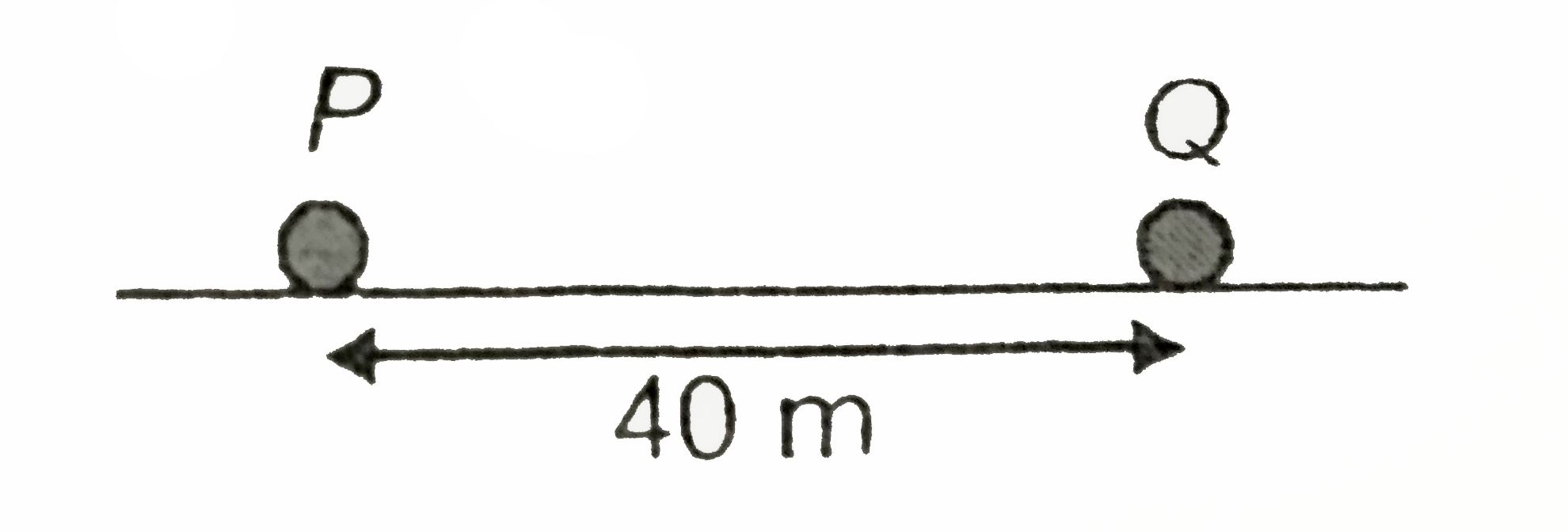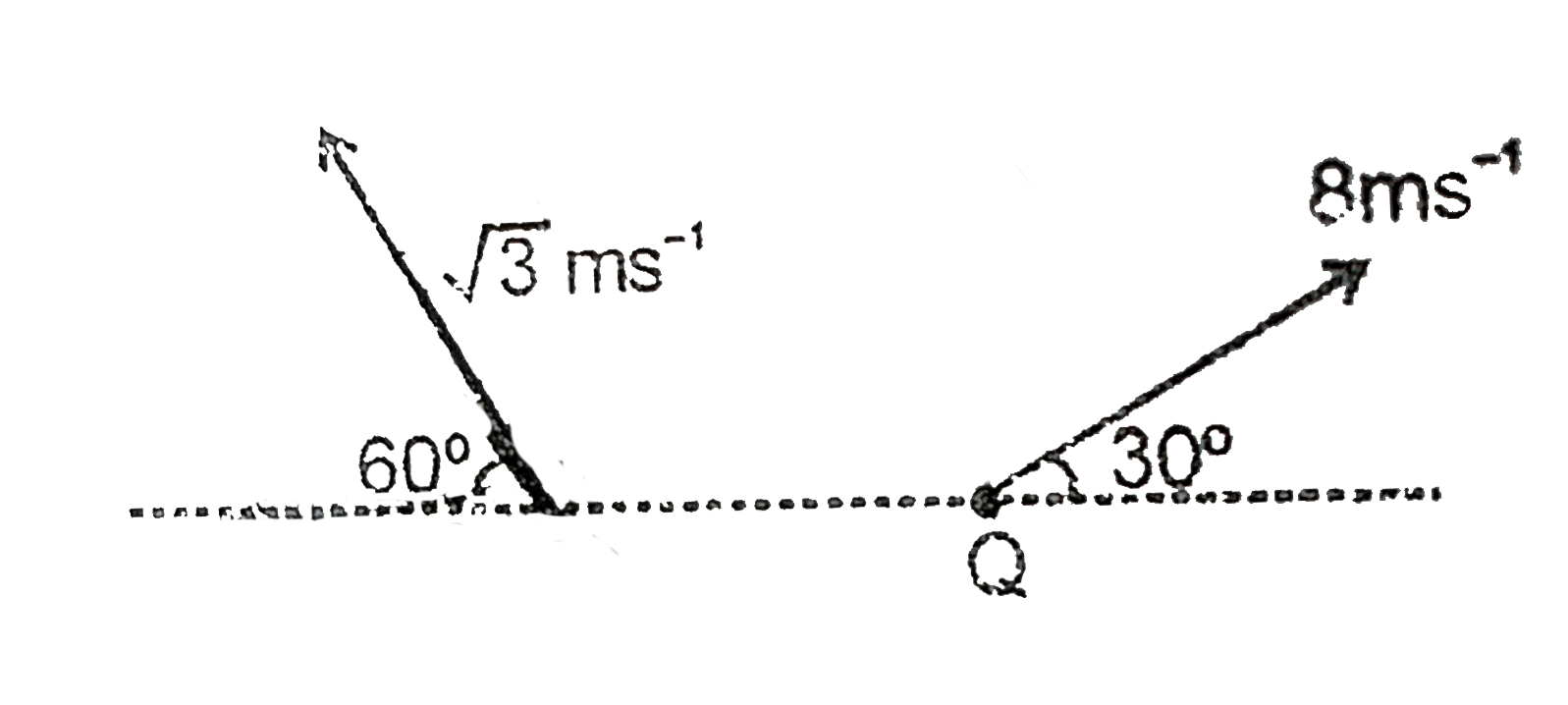To particles P and Q are initially 40 m apart P behind Q. Particle P starts moving with a uniform velocity 10 m/s towards Q. Particle Q starting from rest has an acceleration 2m/s2 in the direction of velocity of P. Then the minimum distance between P and Q will be

45 m
15 m
35 m
30 m
The correct Answer is:B
Step by step video & image solution for To particles P and Q are initially 40 m apart P behind Q. Particle P starts moving with a uniform velocity 10 m/s towards Q. Particle Q starting from rest has an acceleration 2m//s^(2) in the direction of velocity of P. Then the minimum distance between P and Q will be by Physics experts to help you in doubts & scoring excellent marks in Class 12 exams.
Updated on:21/07/2023Topper's Solved these Questions
- MOTION IN STRAIGHT LINEBOOK - AAKASH INSTITUTECHAPTER - MOTION IN STRAIGHT LINEEXERCISE - Assignment (SECTION - C)
7 Videos
- MOTION IN STRAIGHT LINEBOOK - AAKASH INSTITUTECHAPTER - MOTION IN STRAIGHT LINEEXERCISE - Assignment (SECTION - D)
24 Videos
- MOTION IN STRAIGHT LINEBOOK - AAKASH INSTITUTECHAPTER - MOTION IN STRAIGHT LINEEXERCISE - Assignment (SECTION - A)
50 Videos
- MOTION IN A STRAIGHT LINEBOOK - AAKASH INSTITUTECHAPTER - MOTION IN A STRAIGHT LINEEXERCISE - ASSIGNMENT (SECTION - D)
15 Videos
- MOVING CHARGE AND MAGNESIUMBOOK - AAKASH INSTITUTECHAPTER - MOVING CHARGE AND MAGNESIUMEXERCISE - SECTION D
16 Videos
Similar Questions
Two particles P and Q are initially at rest and 1 m aparts. P has a mass of 1 kg and Q a mass of 3 kg . P and Q attract each other with a constant force. At what distance from P's original position do the particles collide?
View SolutionA particle P is moving along a straight line with a velocity of 3ms−1 and another particle Q has a velocity of 4ms−1 at an angle of 30∘ to the path of P. Find the speed of Q relative to P.
View Solution
Knowledge Check
Two particles A and B are initially 40mapart, A is behind B. Particle A is moving with uniform velocity of 10ms−1 towared B. Particle B starts moving away from A with constant acceleration of 2ms−1.
The minimum distance between the two is .A20mB15mC25mD30mTwo particles A and B are initially 40m apart, A is behind B. Particle A is moving with uniform velocity of 10ms−1 toward B. Particle B starts moving away from A with constant acceleration of 2ms−1.
The time which there is a minimum distance between the two is .A2sB4sC5sD6sTwo particles are moving along x-axis. Particle-1 is 40m behind Particle-2. Particle-1 starts with velocity12m/s and acceleration 4m/s2 both in positive x-direction. Particle-2 starts with velocity 4m/s and acceleration 12m/s2 also in positive x-direction. Find
(a) the time when distance between them is minimum.
(b) the minimum distacne between them.A1s 36mB12s 36mC1s 360mD1s 136m
Two particles P and Q are moving as shown in the figure. At this moment of time the angular speed of P w.r.t. Q is

View SolutionTwo particles P and Q are having initial velocities 2V0 and V0 respectively in horizontal x−y plane as shown in figure. P moves with constant acceleration of 5m/s2 opposite to direction of initial velocity. (V0=√103m/s). Speed of P relative to Q when they are at minimum separation is :

View SolutionA particle P is projected upwards with 80m/s. One second later another particle Q is projected with initial velocity 70m/s. Before either of the particle srikes the ground (g=10m/s2)
View SolutionTwo particles P and Q simultaneously start moving from point A with velocities 15m/s and 20m/s respectively. The two particles move with acceleration equal in magnitude but opposite in direction. When P overtakes Q and B then its velocity is 30m/s the velocity of Q at point B will be
View SolutionTwo moving particles P and Q are 10 m apart at a certain instant. The velocity of P is 8 m/s making 30º with the line joining P and Q and that of Q is 6 m/s making an angle 30º with PQ as shown in the firuge .Then angular velocity of P with respect to Q is-

View Solution
